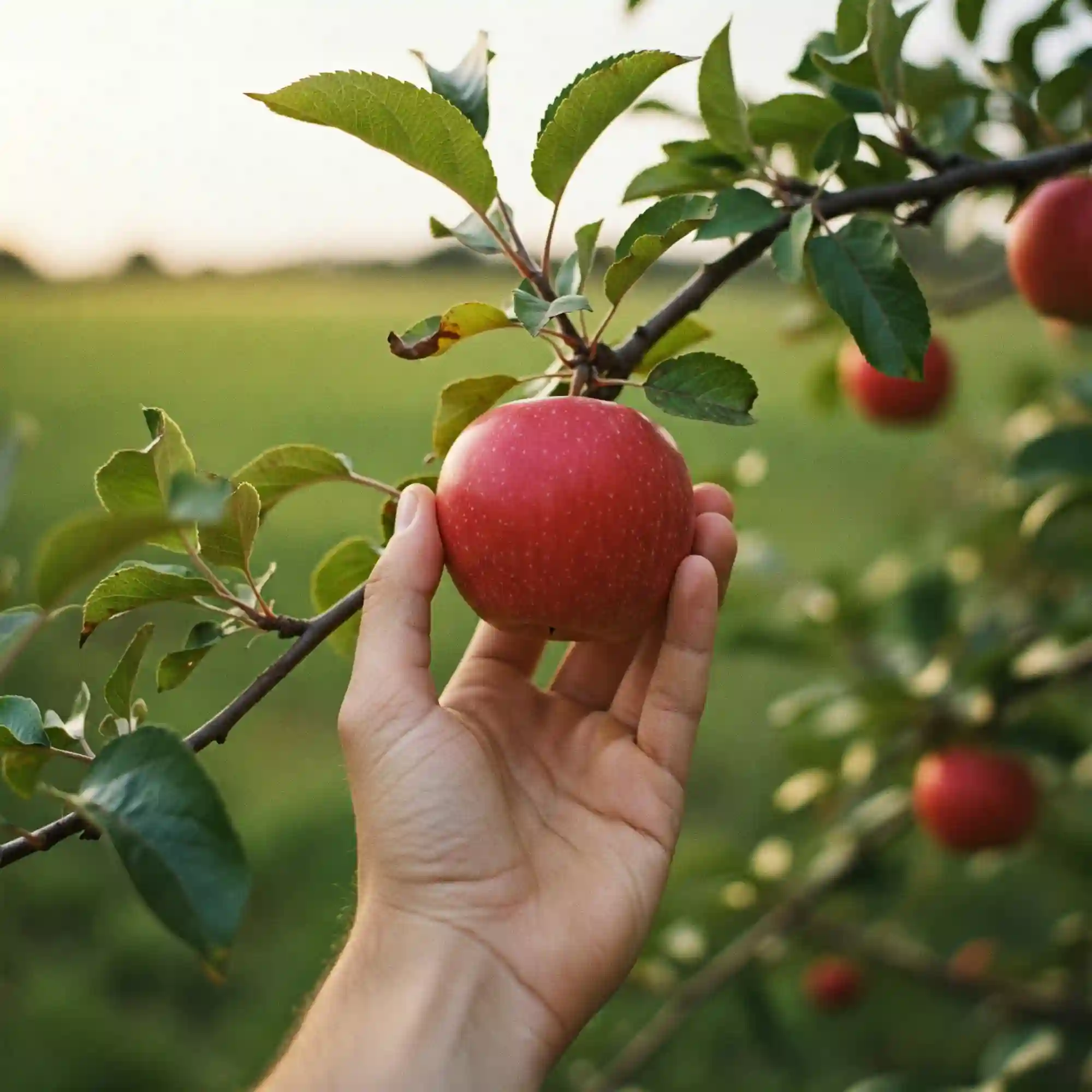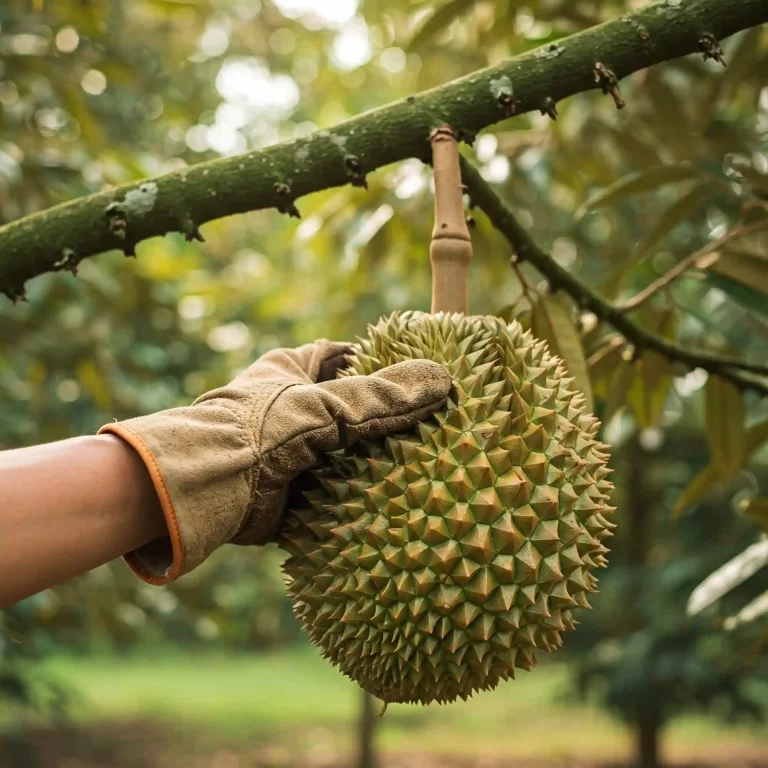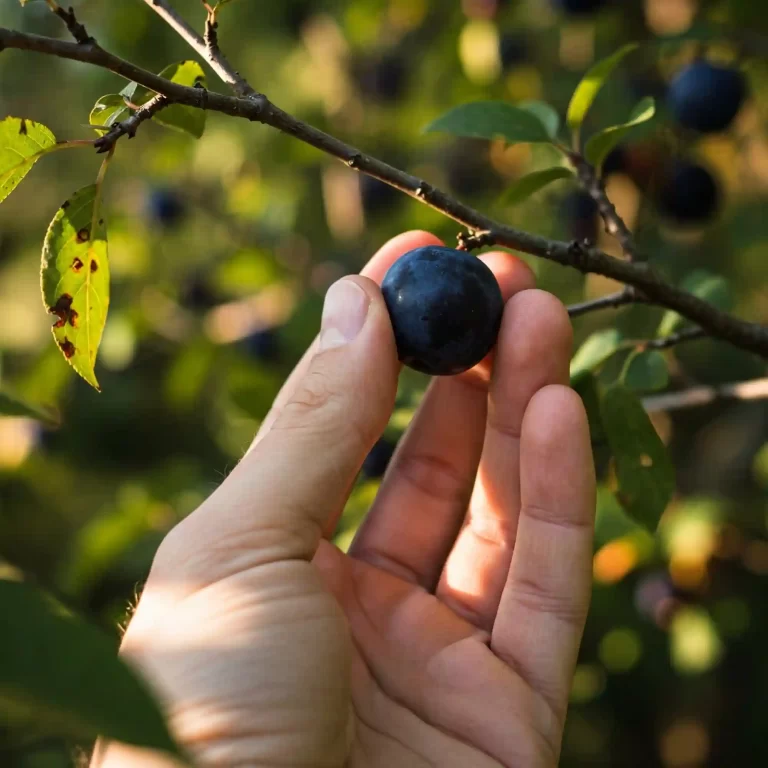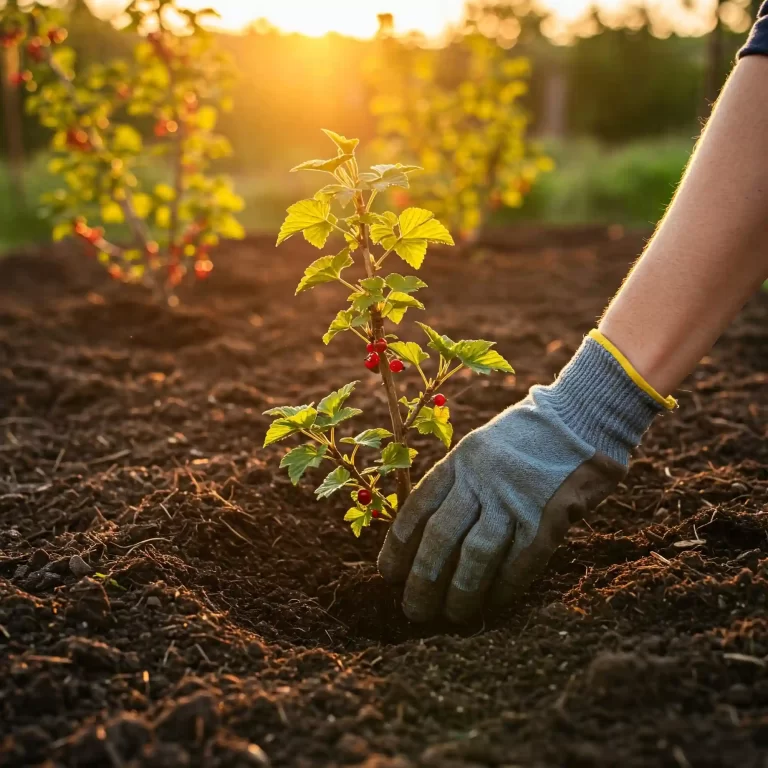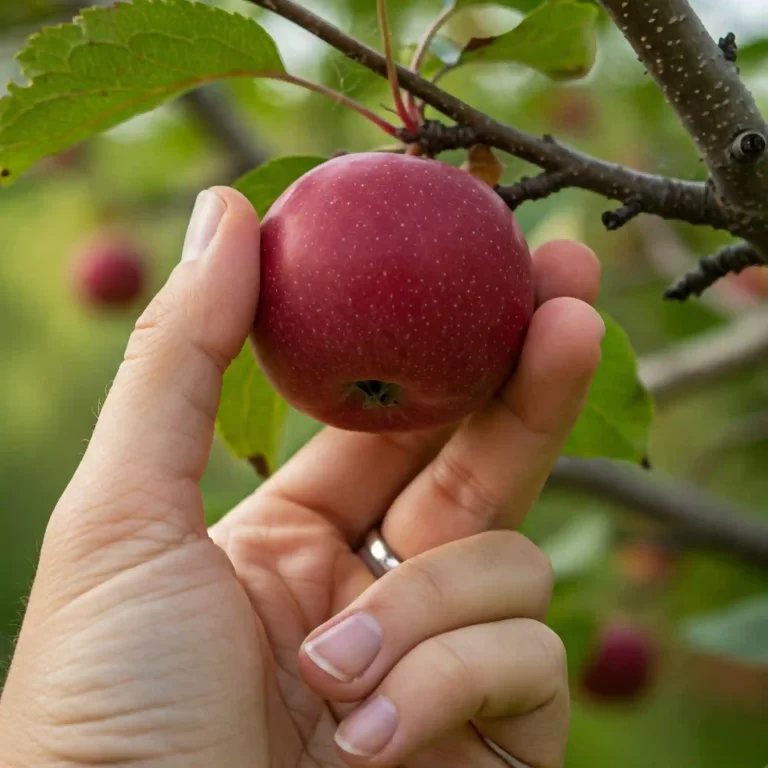Are you tired of buying apples that lack the crispness and flavor of homegrown fruit? Do you dream of walking into your backyard and picking fresh, juicy apples straight from the tree? You’re not alone. Many gardeners yearn for the satisfaction of growing their own food. But the thought of cultivating apple trees can feel daunting. How do you choose the right variety? What’s the secret to abundant harvests? I understand your concerns, and I’m here to guide you.
Do you dream of biting into a crisp, juicy apple you grew yourself? Perhaps you’ve tried growing apple trees before, only to be met with disappointment: lackluster fruit, pests, or even tree death. You’re not alone. Growing apple trees can be challenging, but with the right knowledge and techniques, you can cultivate a thriving orchard and enjoy years of delicious homegrown apples. This guide will walk you through the entire process, from selecting the right variety to harvesting your bountiful harvest.
Choosing the Right Apple Tree Variety
Selecting the right apple tree variety is the foundation for a successful home orchard. Just like choosing the right tomato variety for your garden, the apple tree you select will significantly impact your harvest and overall experience. Consider these factors when making your decision:
Climate: Apple trees have specific chilling requirements, meaning they need a certain number of hours below a certain temperature to break dormancy and bloom properly. If your area doesn’t provide enough chill hours, the tree may not flower or produce fruit reliably.
Pollination: While some apple tree varieties are self-pollinating, many require cross-pollination from another compatible variety to set fruit. Bees and other pollinators play a crucial role in transferring pollen between flowers. If you have limited space, choose a self-pollinating variety like ‘Golden Delicious’ or ‘Liberty’. If you can plant multiple trees, select varieties that bloom at the same time and are compatible pollinators.
Disease Resistance: Apple scab, powdery mildew, and fire blight are common diseases that can affect apple trees. Choosing disease-resistant varieties can significantly reduce your workload and the need for chemical sprays. Some popular disease-resistant varieties include ‘Enterprise’, ‘Jonagold’, and ‘Gala’.
Fruit Characteristics: Consider the size, flavor, and ripening time of the apples. Do you prefer sweet, tart, or a balance of both? When do you want your apples to be ready for harvest? Early-season varieties like ‘Zestar!’ ripen in early summer, while late-season varieties like ‘Fuji’ ripen in late fall.
Here’s a table summarizing some popular apple tree varieties and their characteristics:
Popular Apple Tree Varieties
| Variety | Characteristics |
| Honeycrisp | Sweet, crisp, juicy, and highly popular |
| Gala | Sweet, mild flavor, early ripening, good for snacking |
| Fuji | Sweet, firm, long storage life, excellent for baking and eating |
| Granny Smith | Tart, green skin, excellent for baking and pies |
| Braeburn | Sweet-tart, firm, good for storage and eating |
| Zestar! | Early ripening, sweet and tart, good for fresh eating |
| Enterprise | Disease-resistant, good for home orchards, tart flavor |
Remember, this is just a starting point. Consult with your local nursery or extension office for specific recommendations based on your climate and growing conditions. They can provide valuable insights into the best apple tree varieties for your area.
Planting Your Apple Tree
Now that you’ve chosen the perfect apple tree variety, it’s time to plant it! The best time to plant apple trees is in the spring, after the last frost has passed and the ground has thawed. This allows the tree to establish itself before the summer heat arrives. Here’s a step-by-step guide to planting your apple tree:
- Choose a sunny location: Apple trees are sun-worshippers! They require at least 6-8 hours of direct sunlight per day to thrive and produce fruit. Avoid planting in shaded areas, as this can lead to weak growth and reduced fruit yield.
- Prepare the soil: Apple trees prefer well-drained, fertile soil with a pH between 6.0 and 7.0. If your soil is heavy clay or poorly drained, amend it with organic matter like compost or well-rotted manure to improve drainage and aeration.
- Dig the planting hole: The hole should be about twice as wide as the root ball and slightly deeper. This allows for ample root expansion and prevents the graft union (the point where the scion wood is grafted onto the rootstock) from being buried too deeply.
- Gently loosen the roots: Carefully remove the tree from its container or burlap wrapping. Gently loosen any circling roots that may have developed in the container. This encourages the roots to grow outward into the surrounding soil.
- Place the tree in the hole: Position the tree in the hole so that the graft union is 4-6 inches above the surrounding soil level. This prevents the scion wood from rooting and producing unwanted growth below the graft.
- Backfill the hole: Backfill the hole with the original soil, tamping it down gently to remove any air pockets. Avoid using any soil amendments in the backfill, as this can damage the roots.
- Water thoroughly: Water the newly planted tree deeply to settle the soil around the roots. Continue to water regularly during the first growing season, especially during dry periods.
- Mulch around the base of the tree: Apply a 2-3 inch layer of organic mulch, such as wood chips or straw, around the base of the tree. Mulch helps to retain moisture, suppress weeds, and regulate soil temperature. Keep the mulch away from the trunk to prevent rot.
With proper care and attention, your newly planted apple tree will begin to establish itself and reward you with years of delicious fruit.
Caring for Your Young Apple Tree
Just like a newborn baby, your newly planted apple tree requires tender loving care to grow into a healthy and productive adult. Consistent watering, proper fertilization, and protection from pests and diseases are crucial during the early years.
Watering:
Water is essential for the establishment and growth of your young apple tree. During the first growing season, especially in hot and dry weather, consistent watering is crucial. Aim to water deeply and infrequently rather than lightly and frequently. Deep watering encourages the roots to grow deep into the soil, which is essential for drought tolerance and nutrient uptake.
Fertilizing:
Young apple trees benefit from regular fertilization to support healthy growth and fruit production. Apply a balanced fertilizer, such as a 10-10-10 formulation,1 in early spring before new growth begins.2 Avoid over-fertilizing, as this can lead to excessive vegetative growth and reduce fruit production. Excessive nitrogen can also make the tree more susceptible to diseases.
Pest and Disease Control:
Keep a close eye on your young apple tree for signs of pests and diseases. Common pests include aphids, codling moths, and apple maggots. Aphids can be controlled using insecticidal soap or neem oil. For codling moths and apple maggots, you can use pheromone traps to monitor populations and take action if necessary.
Common diseases affecting apple trees include apple scab, powdery mildew, and fire blight. Apple scab causes dark spots on leaves and fruit, while powdery mildew creates a white, powdery coating. Fire blight is a bacterial disease that can cause branch dieback and even tree death.
Preventing Pests and Diseases:
- Choose disease-resistant varieties: Selecting apple tree varieties that are resistant to common diseases can significantly reduce your workload and the need for chemical sprays.
- Maintain good air circulation: Prune your tree to allow for good air circulation within the canopy. This helps to reduce humidity and discourage the growth of fungal diseases.
- Keep the area around the tree clean: Remove fallen leaves and fruit from around the base of the tree. This helps to reduce the overwintering sites for pests and diseases.
By providing consistent care and attention during the early years, you can help your young apple tree establish a strong foundation for a lifetime of healthy growth and abundant harvests.
Pruning Your Apple Tree
Pruning is an essential practice for maintaining the health, vigor, and productivity of your apple tree. It involves selectively removing branches to shape the tree, improve air circulation and sunlight penetration, and encourage fruit production. Here are some key pruning techniques:
Thinning: This involves removing entire branches, often those that are crossing, rubbing, or growing inward. Thinning opens up the tree canopy, allowing more sunlight and air to reach the remaining branches. This can improve fruit quality and reduce the incidence of diseases.
Heading: This involves cutting back the tips of branches to encourage branching and increase fruit production. Heading is typically done on young trees to establish a strong framework and on mature trees to rejuvenate older wood.
Water Shoot Removal: Water shoots are vigorous, upright shoots that grow from the trunk or main branches. They compete with fruiting branches for nutrients and water, so it’s important to remove them regularly. Water shoots can be identified by their rapid growth and lack of fruit buds.
Timing of Pruning:
The best time to prune apple trees is in late winter or early spring, before the tree begins to leaf out. Pruning during this dormant period minimizes the risk of disease and allows the tree to heal quickly. Avoid pruning in late summer or fall, as this can stimulate new growth that may not have time to harden off before winter,1 making it susceptible to frost damage.
Tools and Techniques:
- Use sharp, clean pruning shears to make clean cuts and prevent the spread of disease.
- Make cuts just above a bud or branch that is pointing outward.
- Avoid stubs, as they can be susceptible to disease.
- Disinfect your pruning shears between cuts to prevent the spread of diseases.
Pruning for Different Stages of Tree Growth:
- Young Trees: Focus on establishing a strong central leader and scaffold branches. Remove any weak, crossing, or damaged branches.
- Mature Trees: Thin out overcrowded branches to improve air circulation and sunlight penetration. Remove any dead, diseased, or damaged wood. Rejuvenate older trees by heading back some of the older branches to stimulate new growth.
By following these pruning guidelines, you can maintain the health and productivity of your apple tree and ensure a bountiful harvest for years to come.
Protecting Your Apple Trees from Pests and Diseases
Pests and diseases can significantly impact the health and productivity of your apple trees. However, by implementing preventive measures and taking prompt action when issues arise, you can minimize their impact and ensure a healthy harvest.
Common Pests:
- Aphids: These small, sap-sucking insects can cause leaf distortion and weaken tree growth.
- Codling Moths: The larvae of these moths bore into apples, causing fruit damage.
- Apple Maggots: The larvae of apple maggot flies tunnel into apples, making them unpalatable.
Common Diseases:
- Apple Scab: This fungal disease causes dark spots on leaves and fruit, reducing fruit quality and yield.
- Powdery Mildew: This fungal disease creates a white, powdery coating on leaves and fruit, hindering photosynthesis.
- Fire Blight: This bacterial disease can cause branch dieback and even tree death. It’s characterized by the sudden wilting and blackening of leaves and shoots.
Preventive Measures:
- Choose disease-resistant varieties: Selecting apple tree varieties that are resistant to common diseases can significantly reduce your workload and the need for chemical sprays.
- Maintain good air circulation: Prune your tree to allow for good air circulation within the canopy. This helps to reduce humidity and discourage the growth of fungal diseases.
- Keep the area around the tree clean: Remove fallen leaves and fruit from around the base of the tree. This helps to reduce the overwintering sites for pests and diseases.
- Monitor your trees regularly: Inspect your trees regularly for signs of pests and diseases. Early detection allows for timely intervention and minimizes damage.
Control Methods:
- Pests:
- Aphids: Use insecticidal soap or neem oil to control aphids.
- Codling Moths: Use pheromone traps to monitor populations and take action if necessary.
- Apple Maggots: Use fruit bags to protect apples from infestation.
- Diseases:
- Apple Scab: Apply fungicides as a preventative measure, especially during periods of wet weather.
- Powdery Mildew: Improve air circulation and consider using fungicides if necessary.
- Fire Blight: Prune out infected branches and use bactericides to control the spread of the disease.
By implementing these preventive measures and taking prompt action when issues arise, you can protect your apple trees from pests and diseases, ensuring a healthy and productive orchard.
Harvesting Your Apples
The moment you’ve been waiting for has arrived: harvest time! Knowing when to pick your apples and using proper harvesting techniques will ensure you get the most out of your homegrown bounty.
When to Harvest:
The timing of apple harvest varies depending on the variety and your specific climate. As a general rule, apples are ready for harvest when they reach full size and develop their characteristic color. Here are some additional signs that your apples are ripe:
- Ease of separation: Gently lift an apple from the tree. If it comes off easily with a slight twist, it’s likely ripe.
- Taste test: Pick a few apples and taste them. Ripe apples will have the sweetness and flavor characteristic of that particular variety.
Harvesting Techniques:
- Handle with care: Apples are delicate fruits. Handle them gently to avoid bruising, which can lead to spoilage.
- Use a sturdy ladder: If you need to reach higher branches, use a sturdy ladder and be sure to have someone spot you for safety.
- Twist and pull: Gently twist the apple from the tree and pull it away. Avoid pulling on the stem, as this can damage the tree.
- Inspect for damage: Discard any apples that are bruised, damaged, or show signs of disease.
Storing and Preserving Your Harvest:
Proper storage and preservation will help you enjoy your homegrown apples for weeks or even months. Here are some tips:
- Short-term storage: Store freshly picked apples in a cool, dry place, such as the refrigerator. Avoid storing them in plastic bags, as this can promote moisture buildup and spoilage.
- Long-term storage: For longer storage, consider storing apples in a cool, dark location, such as a root cellar or unheated garage. Wrap each apple individually in newspaper to absorb moisture and prevent bruising.
- Preserving: Apples can be preserved in various ways, including making applesauce, apple butter, apple pie, or apple cider.
By following these tips, you can enjoy your homegrown apples all season long!
Troubleshooting Common Apple Tree Problems
Even with the best care, apple trees can face a range of issues. Knowing how to identify and address these problems is crucial for maintaining a healthy, productive orchard. Here’s a breakdown of common apple tree problems, including information on specific diseases:
Lack of Fruit Production:
- Possible Causes:
- Inadequate pollination: Ensure your tree has a compatible pollinator nearby.
- Insufficient sunlight: Apple trees need 6-8 hours of direct sun.
- Nutrient deficiencies: Test your soil and fertilize accordingly.
- Water stress: Both drought and overwatering can hinder fruit set.
- Solutions:
- Plant a pollinator variety.
- Ensure ample sunlight.
- Use balanced fertilizer.
- Water deeply and consistently.
Common Diseases:
- Apple Scab:
- This fungal disease causes dark, olive-green to black spots on leaves and fruit.
- It thrives in cool, wet conditions.
- Control: Use resistant varieties, ensure good air circulation, and apply fungicides preventatively, particularly during wet periods.
- Find more information here: Apple Scab Control
- Apple Black Rot:
- This fungal disease causes dark, rotted spots on fruit and cankers on branches.
- Control: Remove infected fruit and branches, and apply fungicides as needed.
- Find more information here: Apple Black Rot Control
- Black Pox Disease (Apple Killer):
- This is a serious viral disease that can cause severe damage and even death to apple trees.
- Symptoms include dark, sunken lesions on bark and fruit.
- Control: Unfortunately, there is no cure. Focus on prevention by using disease-free planting material and controlling insect vectors.
- Find more information here: Black Pox Disease or Apple Killer
- Apple Mosaic Virus (ApMV):
- ApMV causes yellow or white patterns on leaves, reducing tree vigor and fruit yield.
- Protection: Use virus-free rootstock and scion wood. Control aphid populations, which can spread the virus.
- Find more information here: Apple Mosaic Virus Protection
- Apple Chlorotic Leaf Spot Virus (ACLSV):
- This virus can cause yellowing and spotting of leaves, as well as reduced fruit size.
- Control: Use virus-free planting material and control insect vectors.
- Find more information here: Apple Chlorotic Leaf Spot
Pest Infestations:
- Aphids:
- These sap-sucking insects distort leaves and weaken trees.
- Control: Use insecticidal soap or neem oil.
- Codling Moths:
- Larvae bore into apples, causing damage.
- Control: Use pheromone traps and insecticides.
- Apple Maggots:
- Larvae tunnel through apples, making them inedible.
- Control: Use fruit bagging or insecticides.
Other Problems:
- Winter Injury:
- Cold can damage bark and buds.
- Prevention: Choose hardy varieties and protect young trees.
- Sun Scald:
- Sun exposure can crack bark.
- Prevention: Paint trunks white or use tree wraps.
- Girdling Roots:
- Roots circling the trunk restrict nutrient flow.
- Prevention: Inspect roots at planting and correct any circling.
Early detection and prompt action are key to managing apple tree problems. Consult your local extension office for specific recommendations.
Frequently Asked Questions (FAQs)
Here are answers to some of the most common questions about growing apple trees:
1. What is the best soil to grow apple fruits?
Apple trees prefer well-drained, fertile soil with a pH between 6.0 and 7.0. If your soil is heavy clay or poorly drained, amend it with compost or other organic matter to improve drainage and aeration.
2. How do I prevent pests when I grow apple fruits?
- Choose disease-resistant varieties.
- Maintain good air circulation within the tree canopy.
- Remove fallen leaves and fruit from around the base of the tree.
- Monitor your trees regularly for signs of pests.
- Use organic pest control methods like insecticidal soap or neem oil when necessary.
3. How to grow apple fruits in a small backyard garden?
- Choose dwarf or semi-dwarf apple tree varieties, which are smaller in size and require less space.
- Consider espalier training to grow apple trees against a wall or fence.
- Use container gardening techniques to grow apple trees in pots on patios or balconies.
4. What are the best apple varieties to grow apple fruits?
The best apple varieties for you will depend on your climate, growing conditions, and personal preferences. Some popular and recommended varieties include Honeycrisp, Gala, Fuji, Granny Smith, Braeburn, and Zestar!. Consult with your local nursery or extension office for specific recommendations.
5. How to grow apple fruits organically without chemical pesticides?
- Choose disease-resistant varieties.
- Maintain good air circulation within the tree canopy.
- Remove fallen leaves and fruit from around the base of the tree.
- Use organic pest control methods like insecticidal soap, neem oil, and beneficial insects.
- Consider using row covers to protect fruit from pests.
6. What is the proper way to prune to grow apple fruits?
- Prune in late winter or early spring, before the tree begins to leaf out.
- Thin out crowded branches to improve air circulation and sunlight penetration.
- Remove any dead, diseased, or damaged wood.
- Head back some of the older branches to rejuvenate the tree.
7. How to grow apple fruits in containers for urban gardeners?
- Choose dwarf or semi-dwarf apple tree varieties.
- Use large containers with adequate drainage.
- Use a well-draining potting mix.
- Water regularly and fertilize appropriately.
- Protect the tree from extreme temperatures.
8. How to grow apple fruits and maximize fruit production?
- Choose the right variety for your climate and growing conditions.
- Provide adequate sunlight, water, and nutrients.
- Prune the tree regularly to maintain its shape and encourage fruit production.
- Control pests and diseases.
- Ensure proper pollination.
9. How to grow apple fruits in my specific climate zone?
Consult with your local nursery or extension office for recommendations on apple tree varieties that are well-suited to your specific climate zone. They can provide valuable information on chilling requirements, disease resistance, and other factors that are important for successful apple tree cultivation in your area.
10. What are common diseases to avoid when you grow apple fruits?
Common apple tree diseases include apple scab, powdery mildew, and fire blight. Choose disease-resistant varieties, maintain good air circulation, and practice good sanitation to minimize the risk of disease.
Conclusion
Growing your own apple trees can be a rewarding and fulfilling experience. With careful planning, proper care, and a little patience, you can enjoy years of delicious homegrown apples.
Remember to choose the right variety for your climate, plant your tree correctly, and provide it with the care it needs to thrive. By following the tips and techniques outlined in this guide, you can increase your chances of success and reap the rewards of a bountiful harvest.
Additional Resources:
- Your local nursery or extension office can provide valuable information and resources on apple tree cultivation in your area.
- The National Gardening Association offers a wealth of information on gardening topics, including fruit tree care.
- The American Pomological Society is a great resource for information on apple varieties and growing techniques.
I encourage you to share your apple tree growing experiences in the comments section below. Have you encountered any challenges or successes? Do you have any tips or tricks to share with other gardeners? Your insights can be valuable to others who are embarking on their own apple tree growing journey.
I hope this guide has inspired you to start your own apple tree adventure. Happy gardening!
